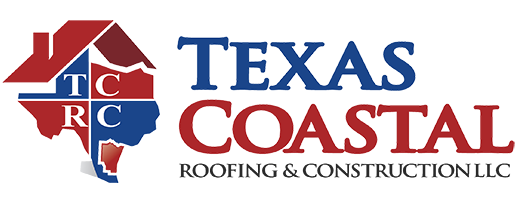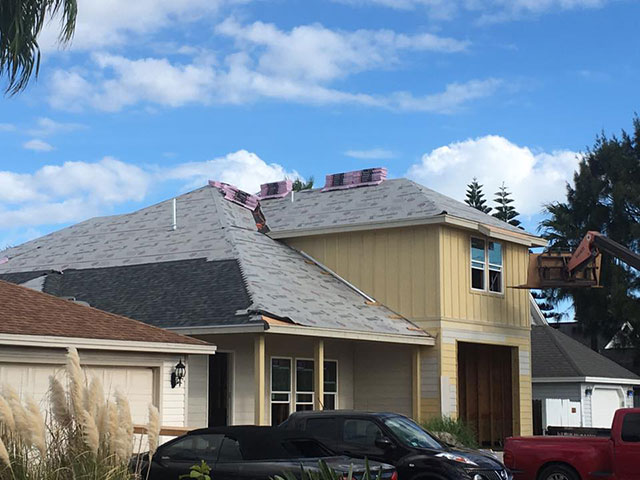Your roof is one of the most important components of your home, providing protection from the elements and helping maintain the structural integrity of your house. However, like any part of your home, your roof requires regular maintenance to stay in good condition. Neglecting roof maintenance can lead to costly repairs, leaks, and even a premature roof replacement. To help you keep your roof in top shape year-round, we’ve put together a comprehensive roof maintenance checklist of tasks you should perform every year.
1. Inspect Your Roof Twice a Year
One of the most critical parts of maintaining your roof is conducting regular inspections. You should inspect your roof twice a year, once in the spring and once in the fall, to catch any issues before they turn into major problems. Here’s what to look for:
Missing or Damaged Shingles: Look for shingles that are cracked, curled, loose, or missing. These are signs that your roof may be vulnerable to leaks and water damage.
Moss, Algae, or Lichen Growth: While moss or algae might seem like a minor aesthetic issue, it can trap moisture, leading to rot or weakened shingles. If you notice any moss or algae, it’s important to remove it carefully to prevent further damage.
Rust on Flashing or Metal Components: Check the flashing around chimneys, vents, skylights, and valleys for rust, cracks, or other signs of wear. Damaged flashing can lead to leaks.
Granule Loss: If you have asphalt shingles, check for granules collecting in gutters or on the ground near the roofline. Granule loss can indicate that the shingles are nearing the end of their lifespan and may no longer offer adequate protection.
Sagging or Uneven Areas: If you notice any sagging or uneven spots on your roof, this could be a sign of structural issues that need immediate attention.
2. Clean Your Gutters Regularly
Your gutters play an essential role in directing rainwater away from your roof and foundation. Clogged gutters can cause water to back up, leading to roof leaks, wood rot, and even foundation damage. Regularly cleaning your gutters, especially in the spring and fall, will help prevent these problems.
Remove Debris: Clear leaves, twigs, dirt, and other debris from your gutters to ensure proper water flow. Use a small trowel or gutter scoop to make the process easier.
Check for Clogs: After cleaning, run water through the gutters to ensure there are no clogs in the downspouts. If water isn’t flowing freely, use a plumbing snake or hose to clear any blockages.
Inspect for Damage: While cleaning, check for signs of gutter damage, such as cracks, rust, or sagging. Repair or replace damaged sections to keep your drainage system working properly.
3. Trim Overhanging Trees
Trees that overhang your roof can pose several risks. Falling leaves and branches can clog gutters, while overgrown branches can scratch or damage your shingles. Additionally, tree limbs can provide easy access for pests such as squirrels or rodents to enter your attic. To minimize these risks:
Trim Back Branches: Regularly trim back any tree branches that are close to your roof. Ideally, keep branches at least 10 feet away from your roofline.
Remove Dead or Dying Trees: If you have dead or dying trees near your home, it’s a good idea to remove them before they can fall and cause significant damage to your roof.
4. Check for Leaks in Your Attic
Your attic is one of the first places where signs of roof damage or leaks may become visible. Inspect your attic for any signs of moisture, water stains, or mold growth. Here’s what to look for:
Water Stains: Dark spots or streaks on the ceiling or walls of your attic can indicate a roof leak.
Moisture or Condensation: If you notice excess moisture or condensation in your attic, this could be a sign of poor ventilation or a hidden leak in your roof.
Mold or Mildew: Mold or mildew growth in the attic is a clear sign that moisture is getting in, often through a roof leak. If you spot mold, it’s important to address the source of moisture and remove the mold to prevent it from spreading.
5. Clean Debris from the Roof Surface
Leaves, twigs, and other debris can accumulate on your roof over time, particularly in valleys or around chimneys and vents. If left unchecked, this debris can trap moisture and promote the growth of mold, algae, or moss, leading to damage. To keep your roof clean:
Use a Broom or Leaf Blower: Gently remove debris from the roof using a broom or leaf blower. Avoid using a pressure washer, as this can damage shingles.
Remove Moss or Algae: If you notice moss or algae on your roof, treat it with a specialized cleaner designed for roofs. Avoid harsh chemicals like bleach, which can damage your roofing materials.
6. Check and Repair Flashing
Flashing is a thin layer of material (often metal) that seals the seams and edges of your roof, such as around chimneys, vents, and skylights. Damaged or deteriorated flashing is a common cause of roof leaks, so it’s important to inspect it regularly.
Inspect Flashing for Cracks or Rust: Check the flashing for signs of rust, cracks, or lifting. These issues can allow water to seep in, leading to leaks and water damage.
Repair or Replace as Needed: If you notice any issues with the flashing, repair or replace it immediately. Use roofing cement to seal small cracks or gaps. For larger issues, consider hiring a professional roofer.
7. Check for Proper Ventilation
Proper ventilation is essential for maintaining the health of your roof and preventing moisture buildup in your attic. Without adequate ventilation, hot air can become trapped in the attic, leading to premature shingle wear, ice dams in winter, and mold growth. Here’s how to ensure your roof is properly ventilated:
Check Attic Vents: Make sure your attic vents (soffit, ridge, and gable vents) are clear of debris and functioning properly.
Inspect Insulation: Ensure that your attic insulation is in good condition and that it isn’t blocking airflow around the eaves. Proper insulation can help regulate attic temperatures and reduce the risk of ice dams.
8. Inspect Skylights and Chimneys
Skylights and chimneys are common sources of roof leaks, so it’s essential to inspect them regularly for signs of damage or leaks.
Check Skylights for Cracks or Leaks: Inspect the seals around your skylights to ensure they are watertight. Look for cracks in the glass or signs of moisture around the frame.
Inspect Chimney Flashing: Chimneys often develop leaks where they meet the roof. Inspect the flashing around the base of the chimney for cracks, rust, or loose areas. Repair any damage to prevent water infiltration.
9. Schedule a Professional Roof Inspection
While regular DIY inspections and maintenance are important, it’s also a good idea to have your roof professionally inspected at least once a year, especially if you live in an area prone to severe weather. Professional roofers have the experience and tools to spot potential problems that homeowners might overlook, ensuring that any issues are addressed before they cause major damage.
Identify Hidden Damage: A professional can detect damage that may not be visible from the ground or during a DIY inspection, such as issues with the roof’s structure or hidden leaks.
Extend Roof Lifespan: Regular professional inspections and maintenance can help extend the life of your roof, saving you money on costly repairs or premature roof replacement.
10. Document Your Roof Maintenance
Keeping a record of your roof maintenance can help you track any repairs or inspections and provide useful documentation if you need to file an insurance claim for storm damage. Here’s what to include in your records:
Dates of Inspections and Maintenance: Note when you or a professional conducted roof inspections, cleanings, or repairs.
Photos: Take before-and-after photos of any maintenance tasks or repairs to document the condition of your roof over time.
Professional Invoices: Keep copies of any invoices from roofers or contractors who have performed work on your roof.
Regular roof maintenance is essential for preventing leaks, avoiding costly repairs, and extending the life of your roofing system. By following this roof maintenance checklist each year, you can identify and address issues early, keep your roof in top condition, and protect your home from the elements. Remember, if you’re unsure about any aspect of your roof’s condition or if you spot significant damage, it’s always best to consult a professional roofer to ensure your home remains safe and secure.
Contact Us
Texas Coastal Roofing and Construction can help you maintain your roof’s excellent condition. We offer a variety of services. Call us today at (361) 332-1263to learn more. We serve the Corpus Christi coastal bay area including Portland, Rockport, Port Aransas, McAllen, North Padre Island, Kingsville, Mathis and more!


Recent Comments